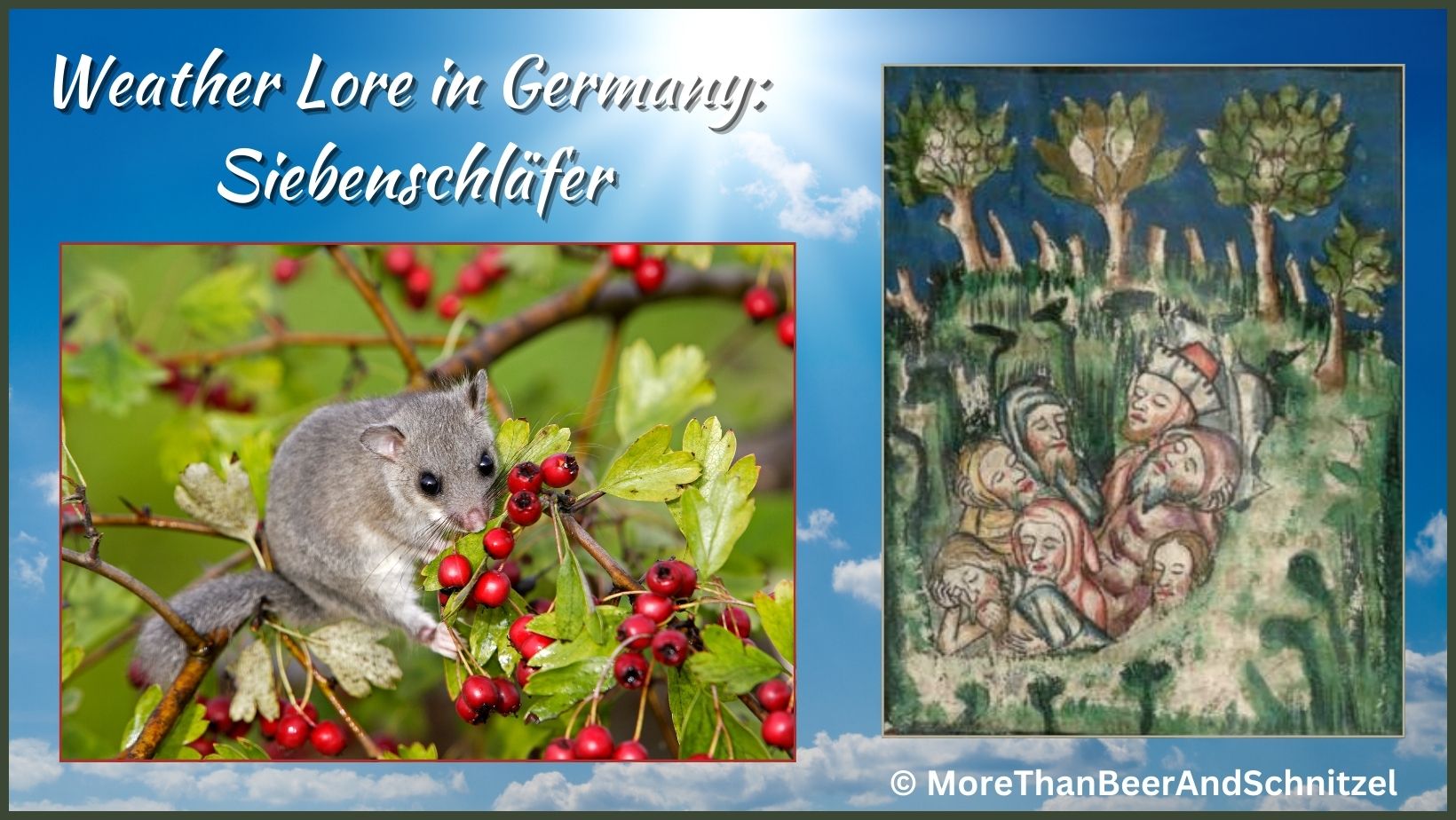Weather lore to predict the weather is not a new thing, or a German thing. Knowing what to expect and adjusting your behavior, especially in agriculture, was important during a time when your livelihood depended on your crops.
Bauernregeln (lit. farmer’s rules; weather lore) are very common, preferably in rhyme form to help retention. They are based on observations of nature including animals, passed down through the generations. Most weather proverbs refer to a month or even a specific day in the calendar, like Martinstag (St. Martin’s Day, 11/11), the Eisheiligen (Ice Saints, 5/11-5/15), or Siebenschläfer (6/27).
Das Wetter am Siebenschläfertag
sieben Wochen bleiben mag.
The weather on Seven Sleepers
may stay seven weeks.
Climate Singularities
There are also exceptions to general weather patterns that occur so regularly that they become their own rule, the so-called singularities (Singularitäten). In Germany, there are several phenomenons that fall into this category.
The Ice Saints in mid-May can bring a cold spell with ground frost which is why you shouldn’t plant before May 15.
Märzwinter (March winter) occurs usually in the middle of March with cold temperatures after spring weather conditions. Recently, this back and forth between winter and spring has been labeled with “Fool’s/False Spring”, “Second Winter”, “Spring of Deception”, and “Third Winter”.
Right before Siebenschläfer, we have something called Schafskälte (sheep cold). Beginning to mid June, polar air moves into Central Europe and brings cold and rain. Because most sheep are already shorn at that time, they are cold, hence the name Schafskälte.
Werden die sieben Schläfer nass,
regnet’s noch lange Fass um Fass.
If the seven sleepers get wet
it's going to rain barrel after barrel.
Siebenschläfer
June 27 is Siebenschläfer or Siebenschläfertag (lit. seven sleepers) in Germany, and supposedly the weather on that day predicts the weather for the next seven weeks. This farmer’s rule has proven to be pretty inaccurate.
However, Seven Sleepers Day was established before 1582 and therefore before the switch from the Julian to the Gregorian calendar, so the original date isn’t June 27 but around July 7. Looking at the weather for the first week of July, the accuracy rises to 60-70 %. This applies to southern Germany only, the climate in northern Germany is too maritime for this particular rule.
Who are the Seven Sleepers?
June 27 is named after the Sieben Schläfer von Ephesus (Seven sleepers of Ephesus). As with most martyr stories and legends (in the Bible and elsewhere), there are different versions that vary in the details. But the gist of it is:
There were seven young men who believed in the Christian God during a time when Christians were persecuted and killed. When King Decius came to their town, they were outed as Christians, but because of their young age, the king gave them time to renounce their beliefs (before he would order to kill them). The men used this time to flee into a cave near Ephesus. Unfortunately they were found and mured. However, they didn‘t die but slept for many years (the number varies vastly) until they were discovered on June 27, 446. The seven awoke and gave testimony of the resurrection of the dead.
The Quran tells a similar story of people sleeping in a cave for many years, it’s called “Die Gefährten der Höhle” (Companions of the cave) and usually it is not said how many people were in the cave but that there is a dispute about the number of sleepers.
It is generally assumed that the cave is located in Ephesus in West Turkey, but other places claim also to be the Seven Sleepers Cave, like Dedeler near Tarsus, also in Turkey, and Amman in Jordan.




Siebenschläfer - Edible Dormouse
A Siebenschläfer is an adorable little animal, the edible dormouse. The animal has really nothing to do with the Bauernregeln, other than the name. It gets its name from the fact that it hibernates for seven months, though in reality it actually takes a longer “winter’s sleep”, from beginning of September until the beginning of May.
The Siebenschläfer was the “Animal of the Year” in Germany in 2004 and in Austria in 2021. In earlier times, the rodent used to be eaten, usually by well-off people because of its price, and as a snack because of its small size (70-160 gr). You can still see that history in its English name “edible dormouse”.



